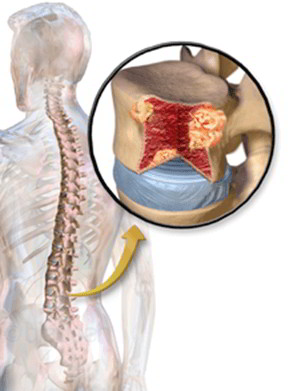There are two kinds of cancerous growth that happen in bone: primary bone cancer,
which originates in the bone itself and is very rare, and secondary bone cancer, which arises from cancer elsewhere in the body and has spread to the bone via the blood.
Secondary cancers, named metastases, are considerably more common than primary bone cancers.
Primary Bone Cancer
Primary bone cancer is a cancerous tumour that originates in bone and is exceptionally uncommon. Primary bone cancers are more common in youth and adolescence and occasionally run in families.
What Might Be Done?
Usually the tumour is removed surgically. Radiotherapy may help reduce the size of the tumour. Postoperative chemotherapy helps destroy any remaining cancerous cells. Removed bone is replaced by metal replacements (prostheses) or by bone gotten from elsewhere in the body or from a donor.
Most individuals treated for primary bone cancer have a tiny possibility of return in the first five years. Then, return is unlikely.
Secondary Bone Cancer (Bone Metastases)
Secondary bone cancer is a cancerous tumour in bone that’s spread from a cancer
elsewhere in the body. Cancers that commonly metastasize to bone include breast, lung and prostate cancer and cancer of the ovary, and are frequently called “secondaries”.
Metastases most commonly grow in the ribs, pelvis, skull or spinal column. The state is substantially more common than primary bone cancer, particularly in elderly individuals, who are more likely to have cancer elsewhere.
What Are The Symptoms?
Bone Metastases May Cause The Following Symptoms, In Addition To Those Of The Primary Cancer:
- Gnawing bone pain which will become worse at night-time
- Swelling of the affected region
- Tenderness over the affected region
- Proneness of affected bones to fracture readily, frequently after mild harm.
What Might Be Done?
If you already have a cancer somewhere else in your body, you may have X-rays or radionuclide scan to assess whether the cancer has spread to the bones. If the site of the main cancer is unknown, you may need additional tests to learn where the metastasis came from. As an example, girls may be given mammography to try to find signs of breast cancer.
Your physician will likely direct treatment at your initial cancer. She or he may also organize for you to have chemotherapy, radiotherapy, or hormonal therapy to alleviate bone pain.
The prognosis for individuals with bone metastases generally is dependent upon the site of the first cancer and how successfully it can be treated. On the other hand, the greatest that can normally be reached for bone metastases is a period of remission and relief from pain.


 (53 votes, average: 4.52 out of 5)
(53 votes, average: 4.52 out of 5)